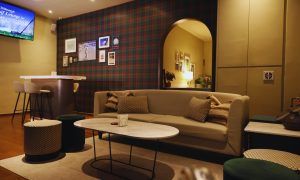KGNS’S REJUVENATED PUTRA COURSE SET TO RECLAIM ITS PLACE AS ONE OF THE BEST GOLFING EXPERIENCES IN THE REGION
By Jonathan Ponniah
In its early days from the late 1960s through the 1970s and into the early 1980s, Kelab Golf Negara Subang was undoubtedly one of the best courses in Southeast Asia. But the onset of modern course design and new turfgrass strains saw the club’s famed championship 18 – then known as the Main Course and subsequently renamed the Putra – become somewhat antiquated by the mid-1990s.
Not anymore. Five years ago, the club completed a massive renovation and redesign of the Putra Course where the originally Serangoon greens were reshaped and returfed with Tifeagle. The aprons and approach areas were changed to Zoysia, although the fairways remained Cowgrass.
But it took a while before the work bore fruit, as excessive traffic hindered the maturing of the new grasses. Now, slowly but surely, the Putra is regaining its place as one of the best parkland courses in the region.

At the helm of these rejuvenation efforts is the club’s energetic captain, Dr Ronnie Yeo. Head to KGNS (as it is commonly monikered) any day of the week and you’ll probably see him there, buzzing around the course in a buggy, chatting with members at the terrace or holding discussions in his office while sipping on his favourite Oolong tea.
The septuagenarian is indeed as busy as the proverbial bee, making sure the Putra and the second 18, the Kelana, are in top-notch condition. Of course, there’s also the socialising that comes with being captain of a members’ club, along with his duties as president of the Golf Club Managers Association of Malaysia.
“I’m here virtually every day! My focus is to improve both golf courses and smoothen the running of the club so that we can get as many members to play as possible,” said Ronnie, who was elected as captain again during last September’s annual general meeting.
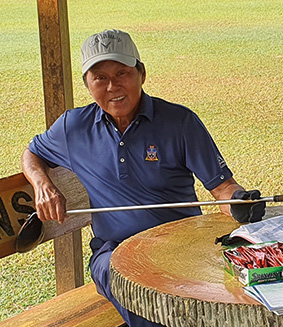
Ronnie stressed that KGNS is a social club and that his prime objective is to make golfing enjoyable for all members.
“We are not preparing for any major championship, so we keep the rough cut very short. It’s still there, of course, along with a first cut. But the rough used to be about six inches long and now we keep to maybe two, three inches. When you cut the rough, the whole course looks much more open,” he said.
Green speed, Ronnie added, is also kept at a manageable level. “As far as the speed of the greens is concerned, we started out with just 8 feet plus on the Stimpmeter when the new committee took over last September, moving up gradually. Now the Putra Course greens are rolling at 9½ feet, which is very fast for a social club … especially with the undulations on some of the greens.
“Most people won’t be able to handle high-speed greens and pace of play will be slower. We want members to enjoy their golf, so green speeds of between 9 and 9½ are ideal,” he explained.
“It’s more important to enhance and improve the overall experience. Green speed is just one element. We can cut and roll the greens to reach speeds up to 11 feet if we want, but that would put too much stress on the turf.”
Anyone who’s played the Putra Course recently will concur. The greens, cut at 3.4mm when we teed off in February, are as tricky as they come … as I found out after a painful four-putt at the par-four 12th hole after a rare flushed five-iron put me on the putting surface in regulation.
One of the sports medicine pioneers in Malaysia, having been previously attached to the National Sports Council and National Sports Institute, Ronnie is now quite an authority on turf health as well. He pointed out that Tifeagle greens need time to mature and really take root.
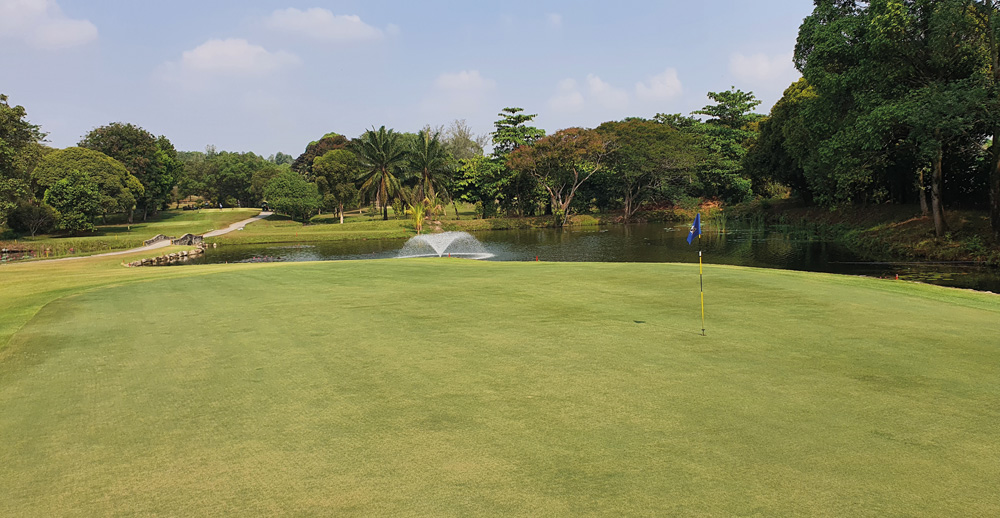
“It’s been five years since we changed the Putra greens to Tifeagle, but because of the high traffic, the roots have had no chance to grow as we were always cutting the greens to make them fast. That caused the grass to look brownish and the greenskeeping team used a lot of surface fertiliser, which is absorbed by the leaves. So the leaves turned green but the roots didn’t grow.
“So when I came in as captain again, I told our course superintendent Anuar to stop all the foliar fertiliser and use granules instead. Granules dissolve and sink into the soil, so the roots will have to grow down to reach the nutrients,” explained Ronnie, whose first stint as captain was for two terms from 2010 to 2012.
“Now the root system has deepened from 1½ to about two inches, which is still not enough for healthy turf. I’ll be happy with three inches but if we can reach about four that would be excellent.”
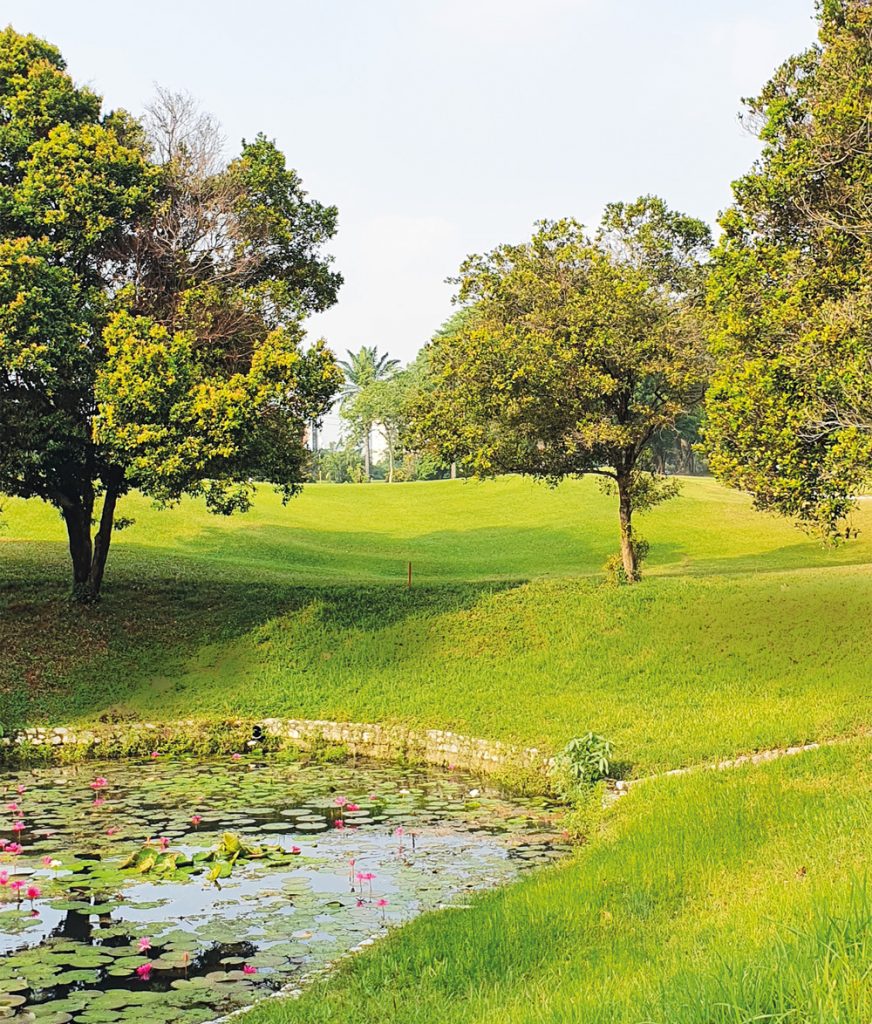
It’s not just the playing conditions at the Putra Course that are top-notch. The par-72, 6330-metre tract is also a visual treat with its lush tree lines and lily-strewn ponds. Ronnie pointed out that a lot of effort was put into clearing the weeds and algae that were choking the waterways.
“The lakes were overgrown with water weeds, so we spent the MCO month cleaning them up – it took us a whole month to clear one lake and it’s still an on-going effort. The weeds will keep coming back, so we have to drag the lakes constantly.”
As we cruised around the golf course, you could see the club’s field staff paying a lot of attention to sprucing up the off-course areas. Ronnie stopped occasionally to compliment them on the work done, and spent a few minutes chatting with course superintendent Anuar Din.
In all this activity, one sensed a true passion for the club. “We’re all working together for the betterment of the club, so that we have a golf course that members not only enjoy playing but can also take great pride in,” Ronnie stressed.
Hosting big events, as was the norm in the early years of the club since opening in 1968, is however not on their agenda right now. “The majority of members do not want that as big events mean losing the course for up to a month or so as the organiser will come in early to prepare,” noted Ronnie.
“We hosted a junior event during my last term as captain and we could consider doing that again, perhaps one of the SportExcel junior circuit legs.”
Managing the club’s high golfing traffic – from its 5,000-plus members, guests and reciprocal/affiliated clubs – is no easy task. With demand for play on the Putra being extremely high, the club recently implemented a rule that members must book to play 18 holes on weekends. Those who wish to play nine holes on Saturday or Sunday can only do so at the Kelana.
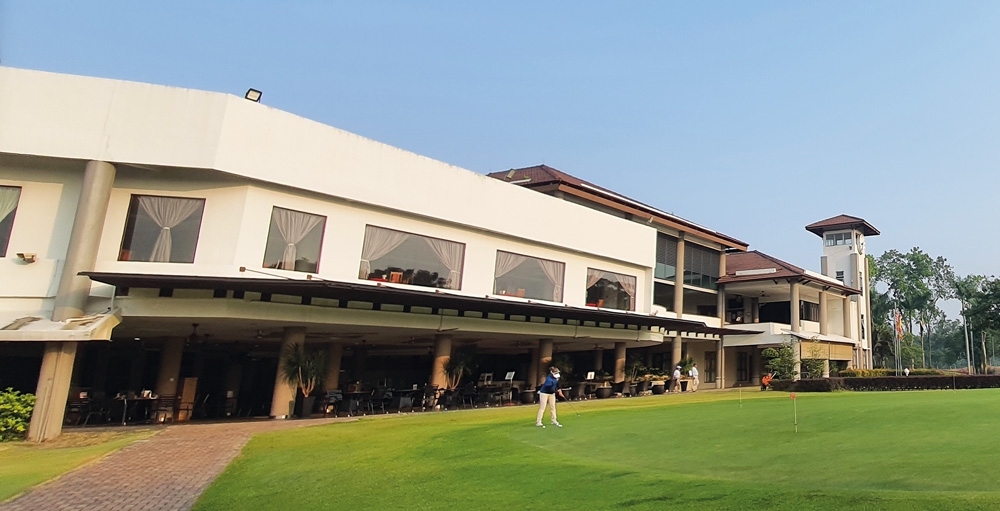
“We recorded more than 11,500 rounds in March, so I’m trying to smoothen the flow of traffic. If you play only nine holes on the Putra on weekends, you will leave nine holes empty when you finish. That deprives others who want to play 18 holes … and most of these are the younger people who have to work on weekdays.
“It’s fine if you only play 13 or 14 holes and stop. But if you play nine holes and walk off, we’ve got nine holes left empty, which is not taken up … and you’re depriving other members.
“The Kelana is a par-70 course and much shorter, but it’s a nice layout and the condition is excellent as well. The greens are Serangoon but the grass is very mature and good to putt on … and they’re very fast,” he stressed.

Indeed, the Kelana does not deserve its nickname, the ‘Kiddie Course’. You still need to hit the ball straight if not far here, and it’s not easy to make up-and-down pars if you miss the relatively small, often elevated greens.
Still, it’s the Putra that is the jewel in the KGNS crown – an apt analogy indeed as ‘Putra’ is the Malay word for ‘Prince’ and is a tribute to the club’s founder, our nation’s first Prime Minister Tunku Abdul Rahman Putra Al Haj.
And it’s a jewel that looks set to shine even brighter over the years to come.









